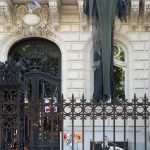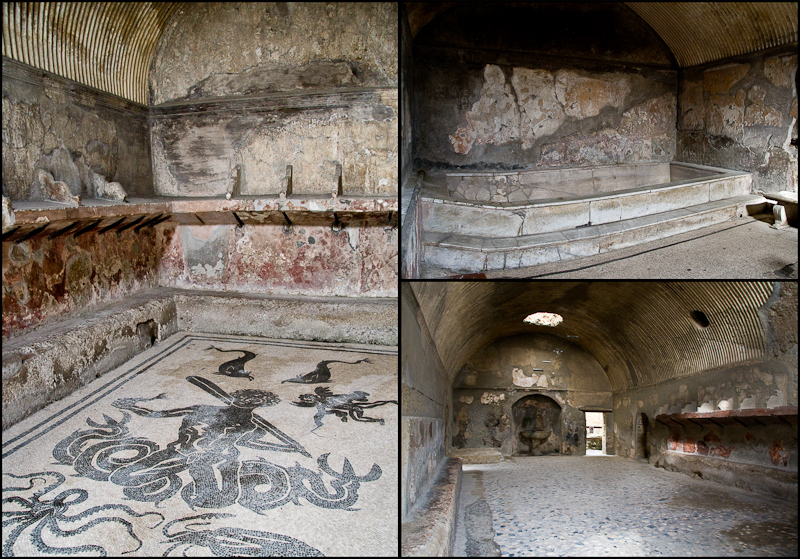
When we arrived at Herculaneum they had run out of guide maps so we were on our own to try and figure out what was what. Luckily, my Fodor’s book had a step by step of where to start and end. Unfortunately, the starting point we were looking for was closed for construction. But we were able to tell what some of the places were by looking through the book. For example, the bath houses were somewhat easy to figure out.
Here’s what the Fodor books says about the baths:
“Stories of Roman licentiousness are belied by the Terme del Foro (Forum Baths), where there were separate sections for men and women. Here you see most of the architectural indgredients of thermae (baths). But besides the mandatory trio in the men’s section (a round frigidarium, a cool swimming pool; a tepidarium, a semi-heated pool; and a calidarium, or heated pool), there’s also an apodyterium, or changing room, with partitioned shelves for depositing togas and a low podium to use as seating space while in line to use the facilities. For more attractive mosaics- particularly a spectacular rendition of Neptune- go around into the women’s baths (with seemingly no frigidarium). The heating system in the tepidarium was also different (no hot air piped through or under, only braziers). Note the steam vents ingeniously built into the bath’s benches and the small overhead cubbies in which bathers stored their togas.”






Melissa
Gorgeous! If only those walls could talk, huh?
Melissa
Gorgeous! If those walls could talk, huh?
Susan
Ah, the Romans-they were so decadent!